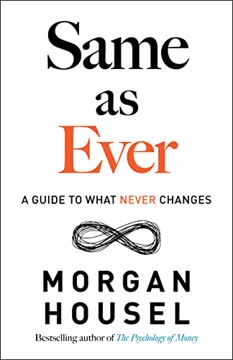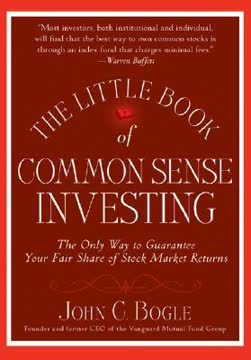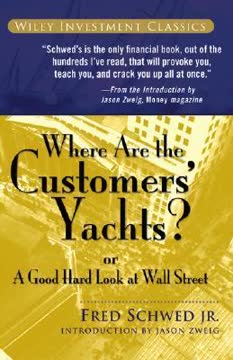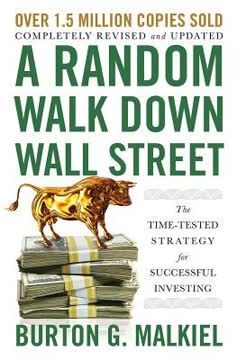つの重要なポイント
1. 早期かつ継続的な貯蓄で経済的安定を確保する
「裕福になるための速い方法は簡単です。収入を支出よりも大幅に減らし、シャザム!—収入が支出を上回るため、あなたは裕福です。」
まず自分に支払う。 経済的安定の基盤は継続的な貯蓄です。金額が小さくても、できるだけ早く始めましょう。投資口座への定期的な拠出を自動化することで、時間をかけて着実に富を築くことができます。
収入以下の生活を送る。 倹約と意識的な支出の心構えを育てましょう。必要と欲望を区別し、短期的な満足よりも長期的な経済目標を優先します。以下のような技術を考慮してください:
- 詳細な予算を作成する
- 支出を細かく追跡する
- 生活の質を犠牲にせずにコストを削減する創造的な方法を見つける
- 収入が増えても生活水準を上げない
覚えておいてください、これは抑制ではなく、経済目標に一致する意図的な選択をすることです。
2. 複利の力を活用する
「ゆっくりと確実に裕福になる秘密は、複利の奇跡です。」
時間は最大の味方です。 複利は、時間をかけてお金を指数関数的に増やすことができます。投資を早く始めるほど、お金が複利で増える時間が長くなり、結果的に大きな富を築く可能性があります。
72の法則を理解する。 この簡単な公式は、投資が倍になるまでの期間を推定するのに役立ちます:
- 72を予想される年間利回りで割る
- 結果は、投資が倍になるまでのおおよその年数です
例えば:
- 年間7%の利回りでは、投資は約10年で倍になります(72 ÷ 7 = 10.3)
- 年間10%の利回りでは、約7年で倍になります(72 ÷ 10 = 7.2)
この法則は、早期に始めることと、わずかに高い利回りを得ることが長期的な富にどれほど大きな影響を与えるかを示しています。
3. 投資ポートフォリオを広く分散する
「証券、資産クラス、市場、そして時間にわたって分散する。」
リスクを分散する。 分散投資は、投資リスクを管理するための重要な戦略です。異なる資産クラス、セクター、地理的地域に投資を分散することで、特定の分野のパフォーマンスが悪い場合の影響を軽減できます。
主な分散投資戦略:
- 資産クラス:株式、債券、不動産、場合によっては商品を混ぜる
- 地理的地域:国内市場と国際市場の両方に投資する
- 企業規模:大企業、中企業、小企業の株式を含める
- セクター:さまざまな業界に投資を分散する
- 時間:ドルコスト平均法を使用して定期的に投資する
分散投資は利益を保証するものではなく、損失を防ぐものでもありませんが、リスクを管理し、長期的なリターンを向上させる可能性があります。
4. 長期的な成功のために低コストのインデックスファンドを選ぶ
「市場よりも多くを知っている人はいない。」
市場の効率性を受け入れる。 市場参加者全体の集合知を一貫して上回るのは非常に難しいです。市場を出し抜こうとするのではなく、低コストのインデックスファンドを通じて市場全体のリターンを捉えることを目指しましょう。
インデックスファンドの利点:
- 低料金:通常、アクティブ運用ファンドよりも手数料がはるかに低い
- 広範な分散:多くの証券にリスクを自動的に分散
- 税効率:取引が少ないため課税イベントが少ない
- シンプルさ:理解しやすく管理が簡単
研究によると、ほとんどのアクティブ運用ファンドは長期間にわたってベンチマークインデックスを下回ることが多く、特に手数料を考慮するとその傾向が顕著です。低コストのインデックスファンドを選ぶことで、コストと複雑さを最小限に抑えながら市場リターンを捉えることができます。
5. 一般的な投資ミスと感情的な決定を避ける
「人間として、私たちは未来がどうなるかを知りたがります。占い師や占星術師は歴史を通じて予測を行ってきました。」
感情をコントロールする。 多くの投資ミスは、市場の動きに対する感情的な反応や市場のタイミングを図ろうとする試みから生じます。以下のような一般的な心理的バイアスを認識し、悪い決定を避けましょう:
- 過信:市場を一貫して上回ることができると信じる
- 群集心理:人気のある投資に群がる
- 直近バイアス:最近の出来事に過度に重きを置く
- 損失回避:同等の利益よりも損失を恐れる
これらの落とし穴を避けるための戦略:
- 長期的な投資計画を立て、それに従う
- 短期的な市場のノイズや予測を無視する
- ポートフォリオを頻繁にチェックしない
- 自動投資を利用して感情を排除する
- 行動経済学について学び、自分のバイアスを認識する
成功する投資は、市場を出し抜こうとするよりも、忍耐と規律に関することが多いです。
6. ポートフォリオを年次でリバランスする
「リバランスとは、定期的に(例えば年に一度)、ポートフォリオの資産配分を見直し、自分が快適に感じるバランスに戻すことを意味します。」
目標配分を維持する。 時間が経つにつれて、ポートフォリオの異なる部分は異なるパフォーマンスを示し、資産配分が元の計画からずれることがあります。年次リバランスは、望ましいリスクレベルを維持し、リターンを向上させる可能性があります。
リバランスのプロセス:
- 現在の資産配分を見直す
- 目標配分と比較する
- 過剰な資産を売却し、過少な資産を購入して再調整する
リバランスの利点:
- ポートフォリオをリスク許容度に合わせる
- 安く買い、高く売ることを強制する
- 分散を維持する
- ポートフォリオ管理の体系的なアプローチを提供する
一定のスケジュールではなく、資産クラスが目標配分から一定の割合(例:5%)ずれたときにリバランスする「閾値リバランス」を検討してください。
7. 税優遇のある退職口座を活用する
「米国政府は私たちにもっと貯蓄するよう奨励したいため、個々の納税者が貯蓄するすべてのドルを連邦税から控除できるさまざまな退職プランが利用可能です。」
税制上の利益を最大限に活用する。 税優遇のある退職口座を最大限に活用して、貯蓄と投資のリターンを向上させましょう。これらの口座は、税控除可能な拠出、税無料の成長、または退職時の税無料の引き出しなどの利益を提供します。
考慮すべき主要な退職口座:
- 401(k)または403(b):雇用主が提供するプランで、マッチング拠出の可能性あり
- 従来のIRA:税控除可能な拠出と税延期の成長
- ロスIRA:税後拠出で、税無料の成長と引き出し
- SEP IRAまたはソロ401(k):自営業者向けのオプション
この順序で拠出を優先する:
- 401(k)に十分な拠出をして雇用主のマッチングを最大限に活用する
- IRAの拠出を最大限にする(従来型とロスのどちらを選ぶかは状況による)
- 401(k)の拠出を最大限にする
- 退職口座を最大限に活用した場合、追加の課税対象投資を検討する
拠出限度額は毎年見直し、変更がある場合に備えましょう。
8. 年齢に応じて投資戦略を適応させる
「個々の投資家にとって適切な配分は、いくつかの重要な要因に依存します。主な要因は年齢です。」
時間とともにリスクを調整する。 人生の異なる段階を進むにつれて、投資戦略は変化する目標、時間の枠、リスク許容度に合わせて進化するべきです。一般的に、若い投資家はより多くのリスクを取ることができ、退職に近づく人は資本保全に焦点を当てるべきです。
年齢別の一般的な資産配分ガイドライン:
- 20代-30代:90-100%株式
- 40代-50代:80-90%株式、10-20%債券
- 60代:70-80%株式、20-30%債券
- 70代:60-70%株式、30-40%債券
- 80代以降:50-60%株式、40-50%債券
これらはあくまでガイドラインであり、個々の状況によって異なる配分が必要な場合があります。以下の要因を考慮してください:
- リスク許容度
- 他の収入源(例:年金)
- 全体的な経済状況
- 健康と寿命
- 遺産目標
定期的に投資戦略を見直し、変化するニーズと状況に合わせて調整しましょう。
9. 市場の変動中もコースを維持する
「周りの人がみんな頭を失っているときは、ただ立って何もしないでください。長期的な視点を持ち続けましょう。」
視点を維持する。 市場の変動は正常で避けられません。短期的な変動、たとえそれが激しいものであっても、市場の長期的な上昇傾向を否定するものではありません。動揺の時期を通じて投資を続けることで、最終的な回復を捉えることができます。
市場の変動を乗り越えるための戦略:
- 視点を変える:市場の下落を低価格で買う機会と見なす
- メディアの誇大広告を避ける:センセーショナルな金融ニュースへの露出を制限する
- 資産配分を見直す:リスク許容度と時間の枠に合っているか確認する
- 定期的な投資を続ける:ドルコスト平均法を使用して低価格の恩恵を受ける
- 目標に集中する:なぜ投資しているのか、長期的な目標を思い出す
市場の変動が大きなストレスを引き起こす場合、それは資産配分がリスク許容度に対して過度に攻撃的であるサインかもしれません。ポートフォリオをより快適なリスクレベルに調整することを検討してくださいが、短期的な市場の動きに基づいて劇的な変更を行うのは避けましょう。
最終更新日:
FAQ
What's "The Elements of Investing" about?
- Purpose: "The Elements of Investing" by Burton G. Malkiel and Charles D. Ellis is a guide to personal finance and investing, aimed at providing easy-to-understand lessons for every investor.
- Content: The book distills the authors' extensive experience into a sensible plan for saving and investing, focusing on simplicity and practicality.
- Structure: It covers topics such as saving, index funds, diversification, avoiding investment blunders, and keeping investment strategies simple.
- Audience: It is intended for both new and seasoned investors, offering timeless advice that can be applied throughout one's investing journey.
Why should I read "The Elements of Investing"?
- Simplicity: The book offers straightforward, jargon-free advice that is accessible to all levels of investors.
- Proven Strategies: It provides time-tested strategies that have helped millions achieve financial success.
- Comprehensive Guidance: From saving to investing in retirement, the book covers all essential aspects of personal finance.
- Expert Authors: Written by renowned investment experts, the book distills decades of experience into practical advice.
What are the key takeaways of "The Elements of Investing"?
- Start Saving Early: The book emphasizes the importance of saving early and regularly to take advantage of compound interest.
- Index Funds: It advocates for investing in low-cost index funds as a way to achieve market returns without the high fees of active management.
- Diversification: Diversifying across asset classes, markets, and time is crucial to reducing investment risk.
- Avoiding Mistakes: The book highlights common investment blunders and how to avoid them, such as overconfidence and market timing.
What is the Rule of 72 mentioned in "The Elements of Investing"?
- Definition: The Rule of 72 is a simple formula used to estimate the number of years required to double an investment at a fixed annual rate of return.
- Formula: Divide 72 by the annual rate of return to get the approximate number of years needed to double the investment.
- Example: At an 8% return, it takes approximately 9 years to double your money (72 divided by 8).
- Application: This rule helps investors understand the power of compounding and the importance of starting early.
How does "The Elements of Investing" suggest you diversify your investments?
- Across Asset Classes: Diversify by holding a mix of stocks, bonds, and real estate to spread risk.
- Across Markets: Include international investments to benefit from global economic growth and reduce reliance on any single market.
- Over Time: Use dollar-cost averaging to invest regularly over time, reducing the risk of market timing.
- Broad Index Funds: Invest in broad-based index funds to achieve diversification with minimal effort and cost.
What are the benefits of index funds according to "The Elements of Investing"?
- Low Costs: Index funds typically have lower management fees compared to actively managed funds, increasing net returns.
- Market Returns: They aim to replicate market performance, providing consistent returns over time.
- Tax Efficiency: With less frequent trading, index funds often generate fewer taxable events, benefiting investors in taxable accounts.
- Simplicity: They offer a straightforward way to invest in a diversified portfolio without the need for constant monitoring.
What mistakes should investors avoid according to "The Elements of Investing"?
- Overconfidence: Believing you can consistently beat the market can lead to risky and costly investment decisions.
- Market Timing: Attempting to predict market movements often results in buying high and selling low.
- High Costs: Paying high fees for active management can significantly reduce investment returns over time.
- Ignoring Diversification: Failing to diversify can expose your portfolio to unnecessary risk and volatility.
How does "The Elements of Investing" recommend you approach asset allocation?
- Age-Based Allocation: Adjust your asset mix based on your age, with more stocks when young and more bonds as you approach retirement.
- Risk Tolerance: Consider your comfort with market fluctuations when determining your stock-bond allocation.
- Rebalancing: Periodically adjust your portfolio to maintain your desired asset allocation, especially after significant market movements.
- Personal Circumstances: Tailor your allocation to your financial situation, goals, and investment horizon.
What is the KISS investing strategy in "The Elements of Investing"?
- Keep It Simple, Sweetheart: Focus on simple, straightforward investment strategies that are easy to understand and implement.
- Index Funds: Use low-cost index funds for broad market exposure and diversification.
- Regular Saving: Emphasize the importance of saving regularly and starting early to build wealth over time.
- Long-Term Focus: Ignore short-term market fluctuations and stay committed to your investment plan.
What are the best quotes from "The Elements of Investing" and what do they mean?
- "The secret of getting rich slowly but surely is the miracle of compound interest." This highlights the power of compounding and the importance of starting to save early.
- "Nobody knows more than the market." This emphasizes the efficiency of markets and the difficulty of consistently outperforming them.
- "Diversify, Diversify, Diversify." A reminder of the importance of spreading investments across different asset classes to reduce risk.
- "Minimize your investment costs." A fundamental principle that underscores the impact of fees on long-term investment returns.
How does "The Elements of Investing" address investing during volatile times?
- Stay the Course: The book advises against making impulsive decisions based on short-term market volatility.
- Rebalancing: Use market fluctuations as an opportunity to rebalance your portfolio and maintain your desired asset allocation.
- Dollar-Cost Averaging: Continue investing regularly to take advantage of lower prices during market downturns.
- Focus on Long-Term Goals: Keep your investment strategy aligned with your long-term financial objectives, regardless of market conditions.
What is the significance of the "Confession" section in "The Elements of Investing"?
- Honesty: The authors share their personal investment experiences, acknowledging that even experts can have biases and make mistakes.
- Real-Life Examples: They illustrate how personal preferences and emotions can influence investment decisions.
- Indexing Core Investments: Despite personal stock picks, the authors emphasize that their core retirement funds are safely indexed.
- Learning from Mistakes: The section serves as a reminder that disciplined investing and sticking to proven strategies are crucial for success.
レビュー
本書『The Elements of Investing』は、主に肯定的な評価を受けており、基本的な投資原則に関する簡潔で明快なアドバイスが称賛されている。読者はインデックスファンド、分散投資、長期戦略に焦点を当てている点を評価している。多くの人が初心者や復習を求める人にとって理想的だと感じている。一部の人々は、そのシンプルさ、繰り返しの多さ、アメリカ中心のアプローチを批判している。本書は早期の貯蓄、借金の回避、低コストのインデックスファンドの利用を強調している。経験豊富な投資家にとっては新しい情報が少ないかもしれないが、多くの人が投資の旅を始める人にとって必読書として推奨している。
Similar Books















